The Latest Model of the Leopard 2 Is Among the Most Strongly-Armored Tanks Ever Developed
Technology advanced at an incredible rate in the 20th century, especially when it came to weapons and vehicles of war. As such, some tanks entered development almost immediately after their predecessor began service. This was the case with the Leopard 2, which saw development begin shortly after the introduction of the Leopard I. While both remain in service, the newer features some impressive technological upgrades.
Leopard I enters service
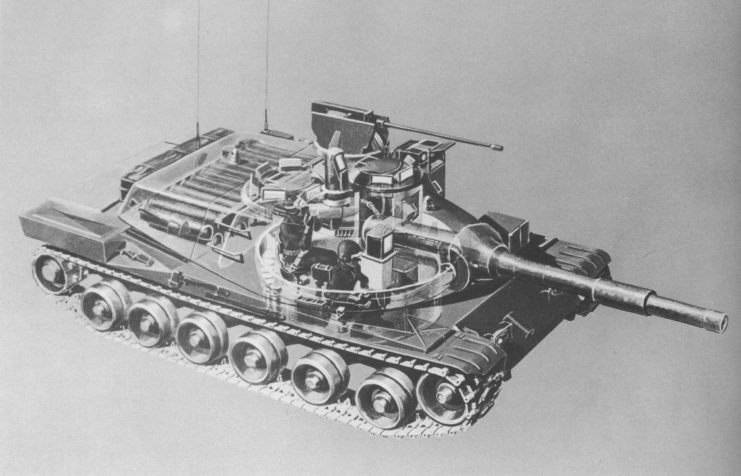
The concept for the Leopard I came about in the 1950s, when West Germany, France and Italy looked to develop a new tank to replace the aging American models being operated in Europe. In the end, West Germany was the only country to continue with the project, which saw the new armored vehicle enter service in 1965.
Upon the Leopard I hitting the battlefield, work began on its successor. A collaboration between the United States and West Germany, the project was dubbed MBT-70. However, by 1967, the decision was made to shelve the new tank.
Upgrading the Leopard I
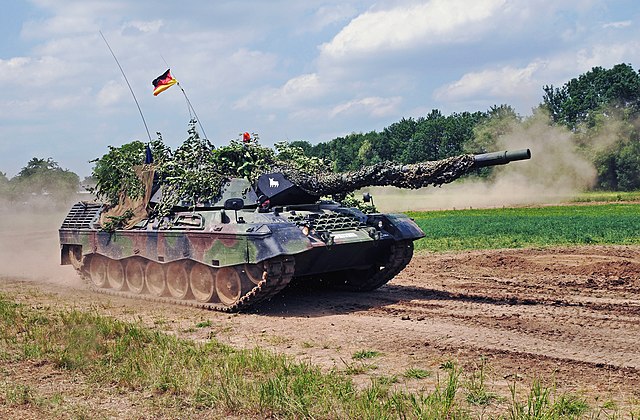
West German officials wanted to use what they’d learned from the MBT-70 to improve upon the Leopard I. The aim was to add a coaxial autocannon, an autoloader and an independent commander’s pericscope. Throughout the prototype stage, a number of designs were tested by lead project officer Paul-Wernet Krapke, with different components placed on hulls.
The designers from Krauss-Maffei used parts that worked well on other armored vehicles. The hydropneumatic suspension and road wheels were taken from the MBT-70, while the return rollers came from the Leopard I. A big improvement was made in 1973, when Weggman designed a new turret for the vehicle.
The Leopard 2 is equipped with a Rheinmetall Rh-120 smoothbore main gun, the same later used by the M1 Abrams, and two 2 x 7.62 mm machine guns, mounted coaxially and on an anti-aircraft mount. It houses a crew of four, who, as of the introduction of the 2A6, are protected by armor of high-hardness steel, tungsten and plastic filler combined with a ceramic component. With other upgrades, this protects against rocket-propelled grenades (RPGs), anti-tank mines and kinetic energy penetrators (KEP).
Leopard 2 enters service
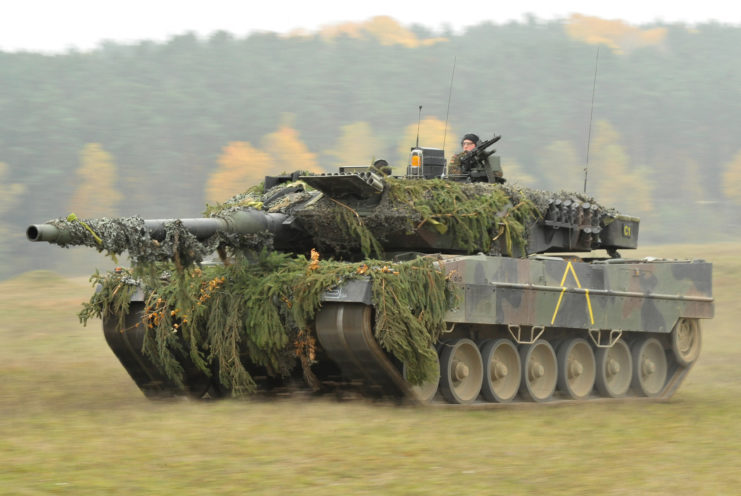
After a decade of trial and error, the Leopard 2 entered into service in 1979. Twenty years later, Germany dispatched 28 to Prizren as part of the Kosovo Force (KFOR), an international group committed to keeping peace in the war-torn country. While the Leopard 2A5s were mainly there to protect checkpoints and act as a deterrent, the operators would return fire, if attacked.
The Canadian Army, as well as Danish forces, utilized Leopard 2s during the War in Afghanistan. A Leopard 2A6M made history in November 2007, when it drove over an improvised explosive device (IED), which subsequently exploded. None of those inside were injured from the detonation, proving the strength of the tank’s armor.
Turkey operates 354 Leopard 2A4s. Toward the end of 2016, several were deployed to combat militants fighting in the Syrian Civil War, and some were sent to Afrin in 2018 for use in Operation Olive Branch.
A number of countries have adopted the Leopard 2
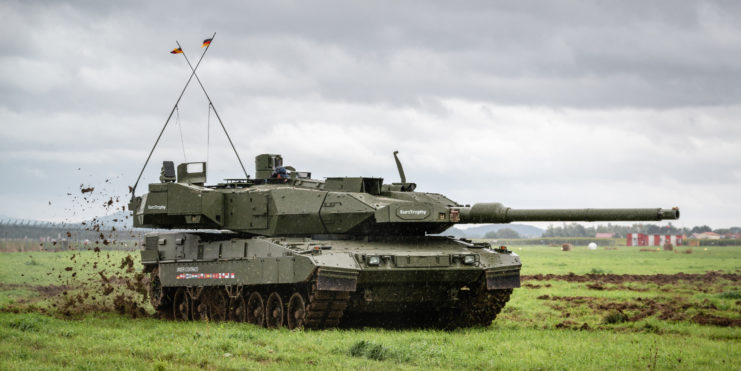
Several countries that purchased the Leopard I also chose to adopt the Leopard 2. Outside of Germany, Canada has operated over 100 of each. Greece is another nation that backed the Leopard I, purchasing over 100 in the 1980s. As present, the Hellenic Army mans 183 Leopards 2A4s and 176 2A6 HELs (for “Hellenic”).
Among the other nations that have equipped their military forces with the Leopard 2 are Austria, Chile, Denmark, Finland, the Netherlands, Norway and Poland. A number have also expressed interest in purchasing the tank, including Bulgaria, the Czech Republic, Croatia, Romania, Tunisia and Slovakia.
The Leopard 2 remains in service
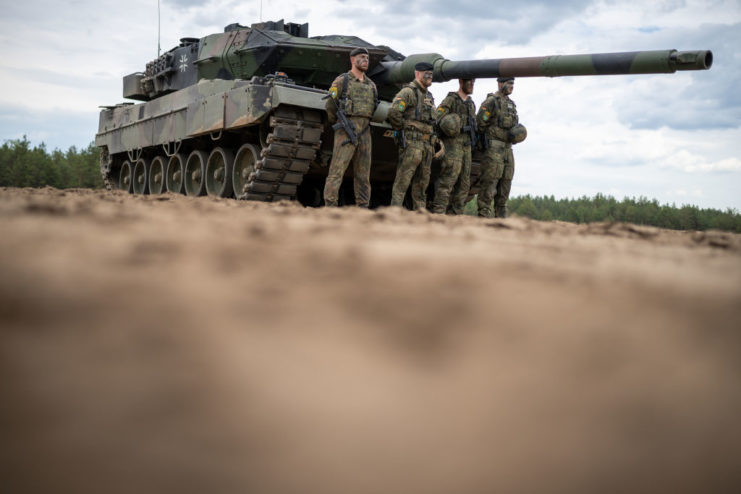
The Leopard 2 remains in service today. However, given decades have passed since its introduction, a number of modifications have been made. Presently, the most popular variant is the Leopard 2A4. Germany and the Netherlands obtained heavy stocks of these tanks, expecting a need for them during the Cold War.
More from us: K2 Black Panther: One of the World’s Most Expensive Tanks
The most recent incarnation of the tank is the Leopard 2A7+, which was introduced at Eurostory 2010. Featuring some of the most advanced armor in the world to protect against a whole host of enemy weapons, it was upgraded to include a FLW 200 remotely controlled weapon station, and it can fire programmable High-Explosive (HE) munitions. Its current operators are Qatar and Hungary
The post The Latest Model of the Leopard 2 Is Among the Most Strongly-Armored Tanks Ever Developed appeared first on warhistoryonline.
Post a Comment
0 Comments